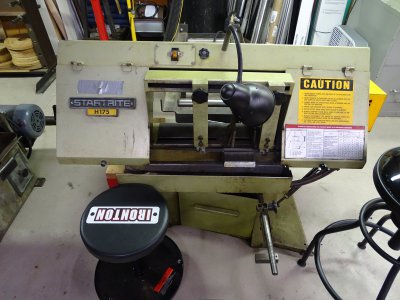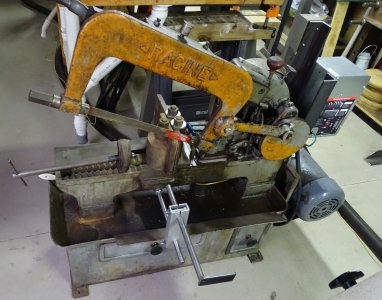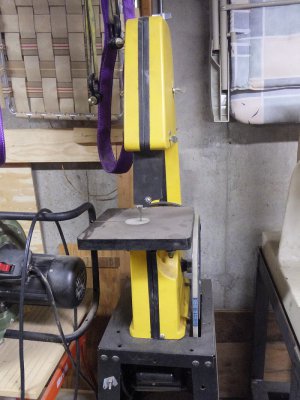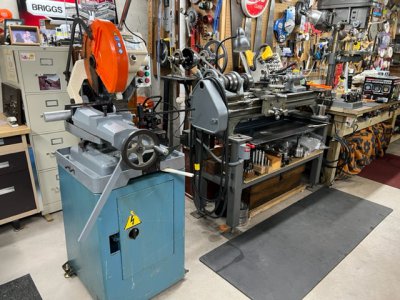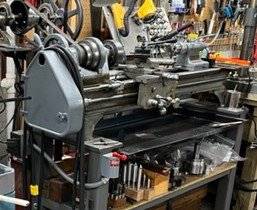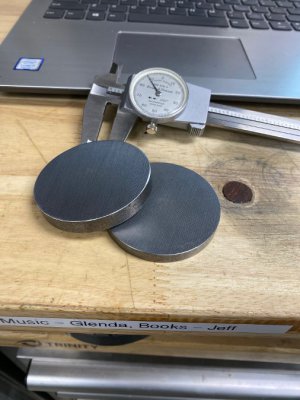In this case I would use a 4/6 variable tooth blade which is pushing the rule of thumb. The "optimum" number of teeth engaged is supposedly 6 to 10. However, I've never had a problem breaking blades when staying close to the guidelines. I like the variable tooth profile in that it reduces the harmonics and allows the saw to produce a smoother straighter cut. If I didn't have that one in stock and it was a one off, or small volume I would probably use the power hacksaw rather than purchase another blade.
I was buying 14" power hacksaw blades for about $2.00 a copy when they fell out of favor. I have well over 50 in stock from 3TPI to 18TPI. In this case the power hacksaw would be a bit slower than the bandsaw, but the fact that I wouldn't have to spend an additional $45.00 or take an hour out of the day to go pick it up would more than compensate for the additional cutting time.
For some reason I seem to have collected metal cutting saws over the years. I currently have a 350mm (14") Baileigh cold saw, an H175 Startrite horizontal/vertical bandsaw, a 10" Rockwell vertical bandsaw, a W66 Racine power hacksaw, and a Black & Decker 14" chop saw.
ON EDIT: I missed the question about a printed guide. I'm not sure if a table exists. This is something I learned way back when I was working in an experimental design shop. Ellis has a brief guide for blade selection on their website under the "Tooth Selection" (TPI) heading.
Ellis welds quality blades for our band saws and other manufacturers. Our General Purpose Blade is an excellent blade when cutting a variety of materials.
ellissaw.com


